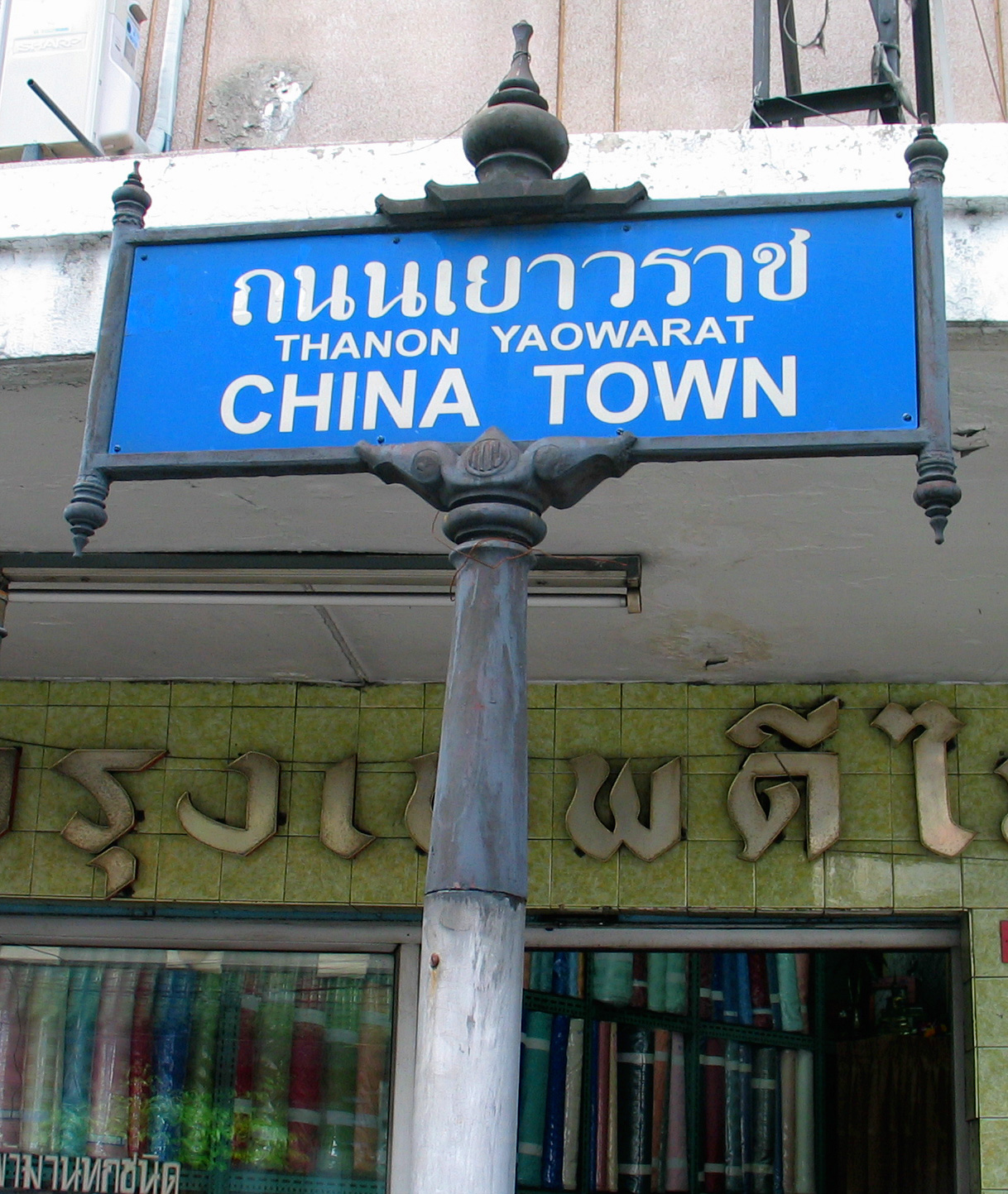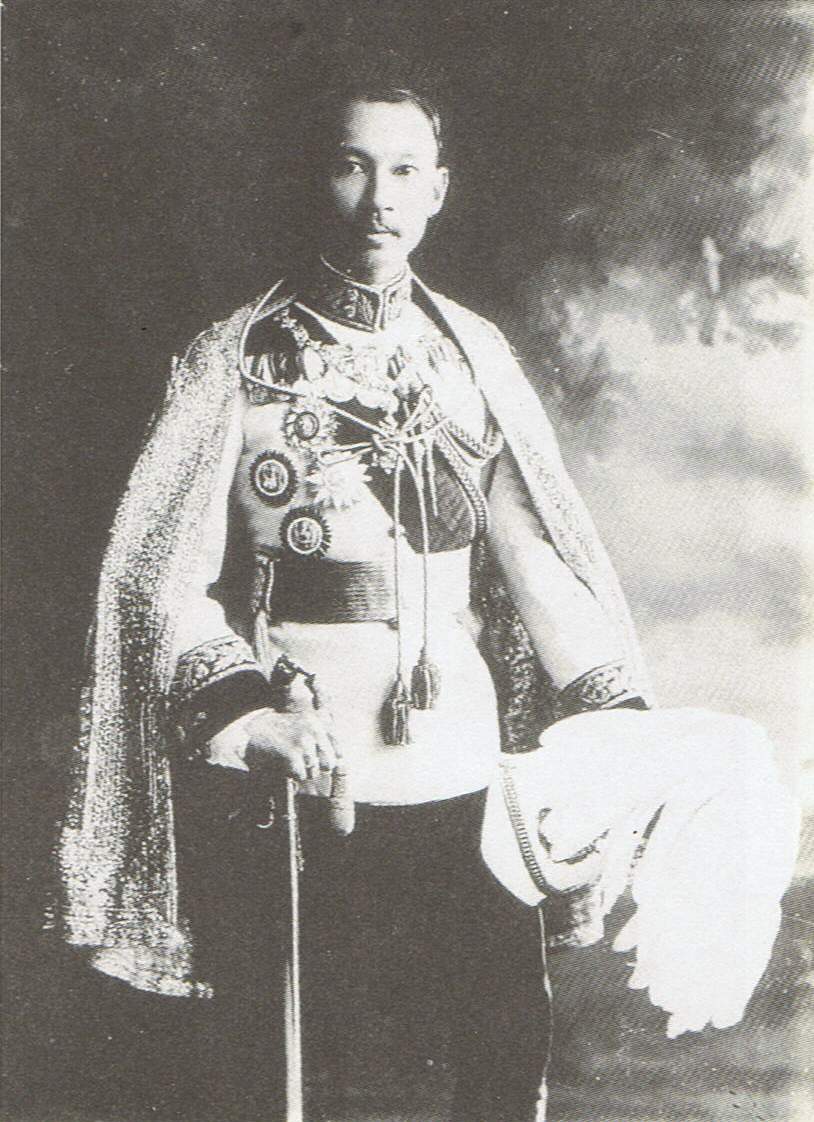|
Hua Lamphong Station (Bangkok Metro)
Hua Lamphong station ( th, สถานีหัวลำโพง, , ) is a rapid transit station on the Blue Line of the Bangkok MRT. It is located underground on Rama IV Road in front of Bangkok railway station, more commonly known locally as "Hua Lamphong", on the former location of Hua Lamphong railway station, the origin of Paknam Railway, the first railway line in Thailand. The station provide a direct connection with Bangkok railway station via underground pathway. Hua Lamphong station used to be the origin of the first phase of the MRT Blue Line (Hua Lamphong–Bang Sue) between 2004–2019. Station details Two levels including * 1 Ticket vending machines, exhibition, walkway tunnel to Bangkok railway station. * 2 Platform Nearby attractions * Bangkok railway station * Yaowarat Road * Wat Traimit (Temple of Golden Buddha) See also * Bangkok MRT The Metropolitan Rapid Transit or MRT is a mass rapid transit system serving the Bangkok Metropolitan Region in Thaila ... [...More Info...] [...Related Items...] OR: [Wikipedia] [Google] [Baidu] |
Pathum Wan District
Pathum Wan ( th, ปทุมวัน, ) is one of the fifty districts (''khet'') of Bangkok, Thailand. It lies just beyond the old city boundary of Khlong Phadung Krung Kasem, and was a rural area on the eastern outskirts of the city when royal villas were built there in the late nineteenth century. The district was officially established in 1915, and covers an area of . A large part of the district area is taken up by the campus of Chulalongkorn University and the green expanses of Lumphini Park and the Royal Bangkok Sports Club. By the turn of the 20th–21st centuries, the district had become known as the modern-day city centre, home to the prominent shopping areas of Siam and Ratchaprasong. History When King Rama I established Bangkok as his capital in 1782, he had canals dug including Khlong Maha Nak, which extended eastward from the fortified city proper of Rattanakosin Island. Communities formed along its bank, including Ban Khrua, a Muslim community mainly of Cham set ... [...More Info...] [...Related Items...] OR: [Wikipedia] [Google] [Baidu] |
MRT (Bangkok)
The Metropolitan Rapid Transit or MRT is a mass rapid transit system serving the Bangkok Metropolitan Region in Thailand. The MRT system comprises two rapid transit lines, with a further three lines (one rapid transit line and two monorail lines) currently under construction and due to open in 2022. The MRT Blue Line, officially the ''Chaloem Ratchamongkhon Line'', between Hua Lamphong and Bang Sue was the first to open in 2004 as Bangkok's second metro system. The MRT Blue line is officially known in Thai as ''rotfaifa mahanakhon'' (รถไฟฟ้ามหานคร) or "metropolitan electric train", but it is more commonly called ''rotfai taidin'' (รถไฟใต้ดิน), literally, "underground train". The second MRT line MRT Purple Line, officially the ''Chalong Ratchadham Line'', opened on 6 August 2016 and connected Tao Poon with Khlong Bang Phai in Nonthaburi in the northwest of Greater Bangkok. It was the first mass transit line to extend outside Bangkok. ... [...More Info...] [...Related Items...] OR: [Wikipedia] [Google] [Baidu] |
MRT (Bangkok) Stations
MRT may refer to: Transport Rapid Transit Systems * Mass Rapid Transit (other) * MRT (Singapore) or Mass Rapid Transit, Singapore * MRT (Bangkok) or Metropolitan Rapid Transit, Thailand * Manila Metro Rail Transit System, Philippines Others * Moreton (Merseyside) railway station, England, code MRT * Moroak airport, ICAO code MRT, in the List of airports by IATA airport code: M Computing * Multiple Render Targets, in computer graphics *mrt.exe, Windows Malicious Software Removal Tool * Ferranti MRT (Market Research Terminal), a handheld computer Geography * Mauritania, ISO 3166-1 alpha-3 country code *Martinique, ITU country code *Mississippi River Trail, US Science *Mitochondrial replacement therapy * Magnetic resonance tomography, also known as Magnetic Resonance Imaging *Malignant rhabdoid tumour *Mauritius Radio Telescope *Mean radiant temperature, a measure of thermal comfort *Mean residence time of matter in a volume *Moral reconation therapy Other uses ... [...More Info...] [...Related Items...] OR: [Wikipedia] [Google] [Baidu] |
Golden Buddha (Bangkok)
The Golden Buddha, officially titled Phra Phuttha Maha Suwanna Patimakon ( th, พระพุทธมหาสุวรรณปฏิมากร; sa, Buddhamahāsuvarṇapaṭimākara), commonly known in Thai as Phra Sukhothai Traimit ( th, พระสุโขทัยไตรมิตร), is a gold Maravijaya Attitude seated Buddharupa statue, with a weight of 5.5 tonnes (5,500 kilograms). It is located in the temple of Wat Traimit, Bangkok, Thailand. At one point in its history the statue was covered with a layer of stucco and coloured glass to conceal its true value, and it remained in this condition for almost 200 years, ending up as what was then a pagoda of minor significance. During relocation of the statue in 1955, the plaster was chipped off and the gold revealed. History The origins of this statue are uncertain. It is made in the Sukhothai Dynasty style of the 13th–14th centuries, though it could have been made after that time. The head of the statue is ... [...More Info...] [...Related Items...] OR: [Wikipedia] [Google] [Baidu] |
Yaowarat Road
Yaowarat Road ( th, ถนนเยาวราช, ; ) in Samphanthawong District is the main artery of Bangkok's Chinatown. Modern Chinatown now covers a large area around Yaowarat and Charoen Krung Road. It has been the main centre for trading by the Chinese community since they moved from their old site some 200 years ago to make way for the construction of Wat Phra Kaew, the Grand Palace. Nearby is the Phahurat or Little India. The area is bordered by the Chao Phraya River to the south. Yaowarat Road is well known for its variety of foodstuffs, and at night turns into a large "food street" that draws tourists and locals from all over the city. History Chinatown is in one of the oldest areas of Bangkok. It is the result of the resettlement of Chinese on the west bank of Chao Phraya River after King Rama I moved the capital of the kingdom from Thonburi to Rattanakosin. From there Chinese traders operated maritime junk trade between (Siam) and China throughout the Rattanak ... [...More Info...] [...Related Items...] OR: [Wikipedia] [Google] [Baidu] |
Walkway From MRT To Bangkok Railway Station
In American English, walkway is a composite or umbrella term for all engineered surfaces or structures which support the use of trails. ''The New Oxford American Dictionary'' also defines a walkway as "a passage or path for walking along, esp. a raised passageway connecting different sections of a building or a wide path in a park or garden." The word is used to describe a footpath in New Zealand, where "walkways vary enormously in nature, from short urban strolls, to moderate coastal locations, to challenging tramps ikesin the high country ountains. Similarly in St. John's, Newfoundland, Canada the " Grand Concourse", is an integrated walkway system that has over of walkways, which link every major park, river, pond, and green space in six municipalities. In Toronto, Ontario, Canada, the SkyWalk is an approximately enclosed and elevated walkway (skyway) connecting Union Station to the CN Tower and the Rogers Centre (SkyDome). It is part of the PATH network. The SkyWalk pass ... [...More Info...] [...Related Items...] OR: [Wikipedia] [Google] [Baidu] |
Paknam Railway
The Paknam Railway was Thailand's first railway line, established in 1893. Stretching 21 km (13 mi), it was a narrow gauge line. The line was constructed by the Paknam Railway Company established by a British navigator Alfred John Loftus and the Danish naval commander Andreas du Plessis de Richelieu. Construction commenced on 10 July 1891. The company was granted a 20-year concession to run the line. The opening of the railway on 11 April 1893 was attended by King Rama V who had in fact invested half of the 400,000 Baht funding required for construction of the line. Initially there were four steam locomotives constructed by Krauss & Co. of Munich, and four trains ran in each direction daily. There were twelve stations in all, with trains taking one hour to travel over the line. The line was initially a financial success. A motor-tramway service was introduced in 1908 and the line was electrified in 1926. After the end of the concession period, the line was purchased ... [...More Info...] [...Related Items...] OR: [Wikipedia] [Google] [Baidu] |
Rama IV Road
Rama IV Road ( th, ถนนพระรามที่ 4, ; usually shortened to , ) is a main road in Bangkok, Thailand. It starts at Mo Mi Junction in the area of Bangkok's Chinatown in Samphanthawong and Pom Prap Sattru Phai Districts and ends at the junction with Sukhumvit Road ( Phra Khanong Junction) in Khlong Toei District near Bangkok Port, also known as Khlong Toei Port. Bordering the road are the Hua Lamphong railway station, Wat Hua Lamphong, New Sam Yan Market, Lumphini Park and Rama VI Memorial Plaza, King Chulalongkorn Memorial Hospital and Queen Saovabha Memorial Institute, the Metropolitan Electricity Authority, and the headquarters of Channel 3. The MRT Blue Line snakes underneath Rama IV Road between Hua Lamphong MRT Station and Queen Sirikit National Convention Center MRT Station. History This road was built in the year 1857 during the reign of King Mongkut (Rama IV) and can be considered as the first real road in Thailand. It was built about four y ... [...More Info...] [...Related Items...] OR: [Wikipedia] [Google] [Baidu] |
State Railway Of Thailand
The State Railway of Thailand (SRT) ( th, การรถไฟแห่งประเทศไทย, abbrev. รฟท., ) is the state-owned rail operator under the jurisdiction of the Ministry of Transport in Thailand. History The SRT was founded as the Royal State Railways of Siam (RSR) in 1890. King Chulalongkorn ordered the Department of Railways to be set up under the Department of Public Works and Town and Country Planning. Construction of the Bangkok-Ayutthaya railway (), the first part of the Northern Line, was started in 1890 and inaugurated on 26 March 1897. The Thonburi-Phetchaburi line (), later the Southern Line, was opened on 19 June 1903. The first railway commander of the RSR was Prince Purachatra Jayakara (Krom Phra Kamphaeng Phet Akkarayothin). The Northern Line was originally built as , but in September 1919 it was decided to standardize on and the Northern Line was regauged during the next ten years. On 1 July 1951, RSR changed its name to the prese ... [...More Info...] [...Related Items...] OR: [Wikipedia] [Google] [Baidu] |
Island Platform
An island platform (also center platform, centre platform) is a station layout arrangement where a single platform is positioned between two tracks within a railway station, tram stop or transitway interchange. Island platforms are popular on twin-track routes due to pragmatic and cost reasons. They are also useful within larger stations where local and express services for the same direction of travel can be provided from opposite sides of the same platform thereby simplifying transfers between the two tracks. An alternative arrangement is to position side platforms on either side of the tracks. The historical use of island platforms depends greatly upon the location. In the United Kingdom the use of island platforms is relatively common when the railway line is in a cutting or raised on an embankment, as this makes it easier to provide access to the platform without walking across the tracks. Advantages and tradeoffs Island platforms are necessary for any station with many th ... [...More Info...] [...Related Items...] OR: [Wikipedia] [Google] [Baidu] |

.jpg)





